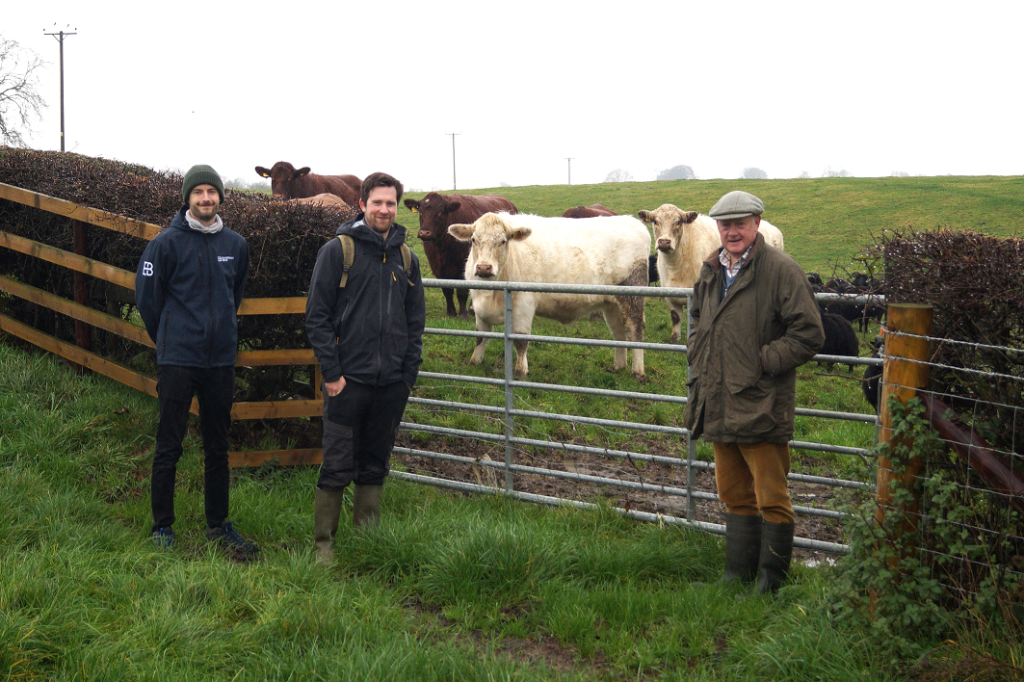With the farming landscape in the UK changing so dramatically in recent years, leaving many generational farmers facing reduced financial support as well as increased costs, the pressure is really on over how to make land generate a return.
Many farmers today are facing the stark reality of dwindling subsidies, so it’s never been more urgent for farmers and landowners to explore securing long-term methods of creating diversified and sustainable income streams to safeguard their future.
Understanding what is involved in new schemes in practical terms can be challenging and there are many questions around how land used for natural capital projects will impact on a farmer’s core business. This is where Environment Bank can help.
What is Environment Bank?
Environment Bank was established in 2006 and was the first business of its kind in the world to launch Biodiversity Net Gain (BNG) Units. Founded by UK ecologist Professor David Hill CBE, Environment Bank developed a concept where biodiversity net gain (BNG) would ensure land used by developers for building and infrastructure projects would help leave the environment in a better state than before the development began, by providing net gains to biodiversity to meet their legal requirements.
BNG became a mandatory legal requirement in 2021 under The Environment Act, which David lobbied hard to secure in law over a 15-year period. Since then, Environment Bank was awarded £200m in private sustainable investment funding to begin establishing a nationwide network of Habitat Banks (parcels of land) totalling over 4,000 hectares across England that deliver BNG Units.
What is a Habitat Bank?
Environment Bank actively began establishing its Habitat Banks across England in 2021, which is essentially securing a parcel of land that creates a significant uplift in biodiversity. Typically they are created on low-yielding land upwards of 10 hectares in size and can be made up of species-rich grassland, woodland, wetland, mixed scrub or rewilding sites. They provide a secure and long-term income to landowners and a biologically diverse haven for nature, leasing land throughout England to the Environment Bank to create biodiverse habitats that help restore nature, selling the ‘BNG Units’, back to developers.
Ensuring the Habitat Banks don’t impact national farming requirements, Environment Bank looks to utilise the marginal or low yielding land with the Environment Bank only taking a lease interest in the land, so the landowner retains ownership.
Environment Bank can then raise BNG Units on biodiversity uplift which they can use to help organisations meet their biodiversity net gain requirements, removing all risk and long-term liability from the landowner.
Since launching its award-winning Habitat Bank scheme last year, Environment Bank has seen enquiries soar, with over 60 new sites expected to be established in 2023. It is partnering with farmers and landowners – including Tim Easby from Oak Stile Farm, North Yorkshire, and Toby Diggens, from Puddington Moor Farm, Devon – establishing Habitat Banks on their land through its privately funded management scheme that guarantees an income for 30 years.

What type of land is required for a Habitat Bank?
All types of land are considered for Habitat Banks including currently unproductive areas, old pasture and scrubland as well as under-performing arable land. This is across the acreage on parcels of land upwards of 10 hectares in size and doesn’t have to be in one block.
The ecologists work with landowners to establish habitats that work best for their land operations, and which creates the best outcomes for nature in their location. They won’t change the entire face of your farm, they will simply help support the replacement of your existing EU farm subsidies as an alternative use of small parcels of land.
How Habitat Banks benefit farmers
A crucial benefit is that farmers retain ownership of the land. A management plan, contracted to and delivered by the landholder, is tailored to suit the existing land management strategy and sources of funding, as well as ensuring the most tax-efficient solution. Environment Bank pays up to £27,000 per hectare over a 30 year period for the management and lease of the land, as well as a generous welcome bonus.
Being fully funded, Environment Bank typically arranges the lease and management payments within 20 weeks of registration, and covers all costs for establishing and managing the Habitat Banks, extending to legal and tax advice where appropriate. It has a ready-made solution, so unlike brokerage models, farmers do not have to manage the complex implementation process or take any of the risk of the scheme failing. All of that sits with Environment Bank.
Farmers receive an on-boarding fee, their first year’s rent upfront, and then annual payments which increase with inflation for the 30-year term.
The goal of Environment Bank is to establish a network of Habitat Banks in every area of England to restore biodiversity and help farmers achieve this all whilst protecting their assets, making it a win-win situation for hard-pressed farmers.
There are many benefits to the scheme. It is uniquely designed to fit within existing farm enterprises including the production of food, tourism enterprises and other business streams, as well as alongside the government’s new Sustainable Farming Initiatives (SFI).
The management schedule on a Habitat Bank
How the land is managed depends on the management plan agreed with the landowner and how the Habitat Bank will work alongside other farm enterprises. It will be monitored regularly by ecologists at Environment Bank, and the progress reported back annually to the local planning authority or responsible body as part of their BNG obligations.
For grassland, for example, each year, the fields will be closed off during flowering season and the land keeper can take a hay cut once wild flowers have bloomed. In the autumn, the ground can be used for grazing, before livestock come back off the land again in March to allow the flora and fauna to bloom again, attracting rare species including birds and insects.
Native shrubs are often planted around the perimeters of the grasslands and livestock fenced out from the area to allow new shrubs to grow. Once established, the fencing will come down and the livestock can graze in the open habitats. Ecologists may put in ponds and wet scrapes if required to attract bird species such as endangered curlew and lapwing to breed and encourage more rare species of wildlife.
The land is managed in this way by the landowner – or generations of landowner – over a minimum 30 year period to allow for a fully biodiverse habitat to be established.
What do landowners involved in the scheme think?
Speaking of the establishment of a Habitat Bank at Oak Stile Farm, North Yorkshire, Tim Easby said: “We are delighted that Oak Stile Farm is hosting a Habitat Bank so that we can do our bit to enhance local biodiversity.
“We took ownership of this former dairy farm over 20 years ago and have begun to enhance areas for wildlife with sections of woodland planting and new hedgerows. We have always wanted to do more and Environment Bank’s Habitat Bank scheme allows us to enhance large areas of our grasslands for wildlife at a scale we couldn’t do before in a financially sustainable way.”
Many landowners and farmers are signing up to the scheme, and there is none more passionate about the benefits of Habitat Bank creation than one of the first farmer’s to sign up to the programme, Toby Diggens from Puddington Moor Farm.
“Being involved in such a ground-breaking project was important to me, as it’s one of the ways we can contribute to restoring nature and help reverse the environmental crisis,” he said.
“There are so many benefits to protecting wildlife and nature fundamentally, but this partnership also allows us to guarantee an income for the next 30 years on land which we would have to conventionally farm very hard to see any profit.”
To find out more about biodiversity net gain and Habitat Bank creation options for your land, please call our team on 01904 202 990 or visit www.environmentbank.com.



